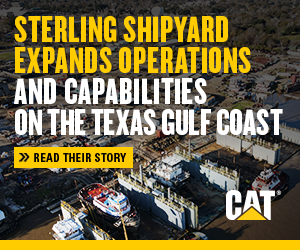EDITORIAL – September/October 2014
Dredging’s Positive Impact
As GLSR LLC works on the remediation of the Grand Calumet River and adjacent wetlands their efforts are creating a renewed landscape that is a boon to the area. Our article in this issue describes the mechanics of achieving the remediation. Another aspect is the effect the project is having on the local area.
The Calumet is an industrialized area from Lake Calumet on the south side of Chicago extending into northwest Indiana through various tributaries and canals including the Calumet Little Calumet and Grand Calumet Rivers.
Kris Krouse executive director of the Shirley Heinze Land Trust (SHLT) spoke to me in September. The SHLT owns the Seidner Dune & Swale which is an important part of the remediation. Krouse said that after 100 years of industrialization there has been a shift in the culture and mindsets of the people in the Calumet area and that in partnership with the Nature Conservancy federal and state regulators and the EPA the area is finally being remediated.
“Northwest Indiana has never been a destination location” said Krouse even though there is a national park here – the Indiana Sand Dunes. The park has always been under-utilized. He hopes that with the restoration of the Calumet area which includes the Indiana Harbor Ship Canal the area will become a popular place to visit. This will be very good for the economy of the area in addition to the fact that the remediation is important to the health and well being of the people who live near it he said.
J.F. Brennan’s Tyler Lee explained that the river edge of the marsh was infested with nonnative cattails and phragmites as well as the same contaminants as are in the river. It offered very poor habitat to aquatic animals because of the heavy invasive vegetation and contamination he said.
The Seidner Dune and Swale is “a dedicated state nature preserve (that) protects globally rare dune-and-swale topography and floodplain marsh along the Grand Calumet River. (A swale is a low marshy tract of land.) Natural communities here include black oak savanna sand prairie sedge meadows cattail marsh and buttonbush swamp. The black oak savanna and inter-dunal wetlands communities provide habitat for a diverse variety of flora and fauna” according to Trust literature. It is the upland portion of the SHLT property Lee said.
“There are isolated wetlands in the swales of that property that are very high quality. The remediation Brennan is doing adds marsh area to the edge of the dune and swale habitat will allow for an additional ecological zone in the preserve and provide a more complete habitat to the area” he said adding that “we were not allowed into the actual dune and swale habitat because it was naturally formed and is of such high quality they did not want it disturbed.”
The Gaylord and Dorothy Donnelly Foundation is a private foundation involved in the Calumet remediation including as a Seidner restoration partner. In July the foundation hosted a three-day board meeting in the Calumet area viewing Chicago’s Millenium Reserve from a building top dining on the shores of Lake Calumet and visiting restoration sites along the southern rim of Lake Michigan. Reports on the event are enthusiastic almost euphoric about the restoration of the natural landscape of South Chicago and Northwest Indiana.
The Calumet region has been so contaminated for more than 100 years that restoration at one time seemed to be an impossible task. The list of contaminants and the sources of the contaminants is daunting. But little by little over the past few decades the sources are being eliminated and cleanup undertaken on a projectby- project basis. As with all waterway cleanup dredging has been a major part of it with accompanying sediment and water management debris removal capping and wildlife habitat restoration.
Crews working on these projects have an emotional stake in what they are doing pride in the job and a real desire that their efforts create a useful and beautiful area for the local people. The dredging industry is indeed a full partner in this effort.
Judith Powers



